Pistol Squat Progression: 7 Exercises to Use
The pistol squat is as iconic a bodyweight exercise as it is difficult - and many individuals new to bodyweight training may find that they don’t have the balance or physical strength to pull one off.
Fortunately, it is entirely possible to build up the necessary skill and strength needed to do a full pistol squat. This is done through the use of progression exercises that act as predecessors to the pistol squat.
In this article, we will discuss the best pistol squat progression exercises (in graduating order), and how they can be used to support your own journey to a full pistol squat.
What are Progression Exercises - and How Do They Help You Do Pistol Squats?
Because calisthenics exercises cannot incorporate additional weight like other types of resistance training do, bodyweight athletes maintain their progression by performing increasingly intense and complex exercises instead.
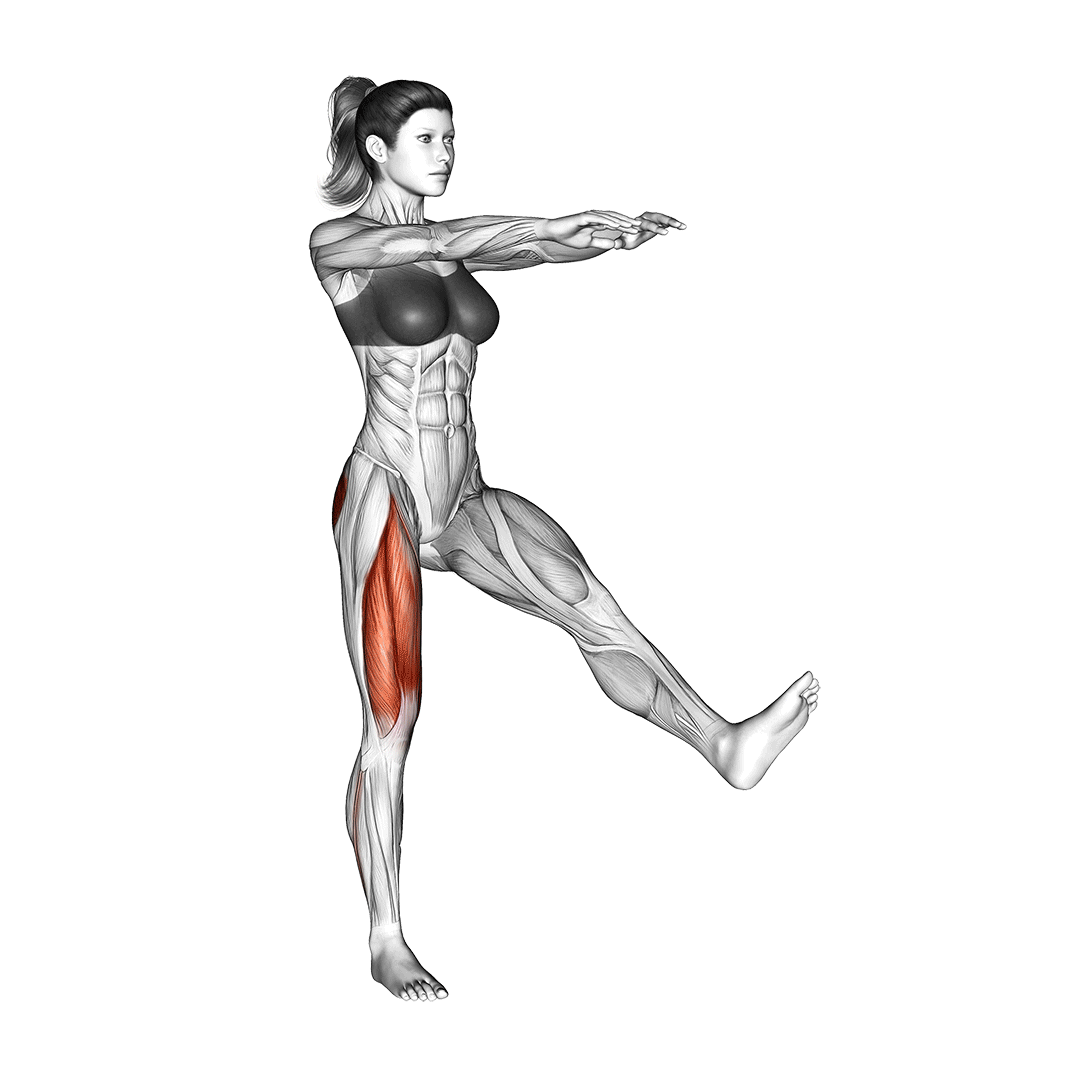
Lower body exercises are no different in this regard, as it is only a matter of time until novice athletes find that the conventional bodyweight squat is no longer as challenging (and beneficial) as it previously was.
Generally, bodyweight athletes start with an exercise that suits their current level of physical strength. This new exercise will be performed until they have sufficiently developed enough strength to move on to a more challenging one. The pattern of advancement is repeated until the athlete has reached the elite level.
The exercises in this article have been arranged from the least intense to the most intense, and as such novices should begin with the first few exercises listed.
How to Use Progression Exercises for the Pistol Squat
To build up the strength and skill needed to do pistol squats, you will first need to perform an exercise that fits your existing capabilities. If you already have some experience in resistance training, it is entirely possible to skip a few of the following exercises in this article.
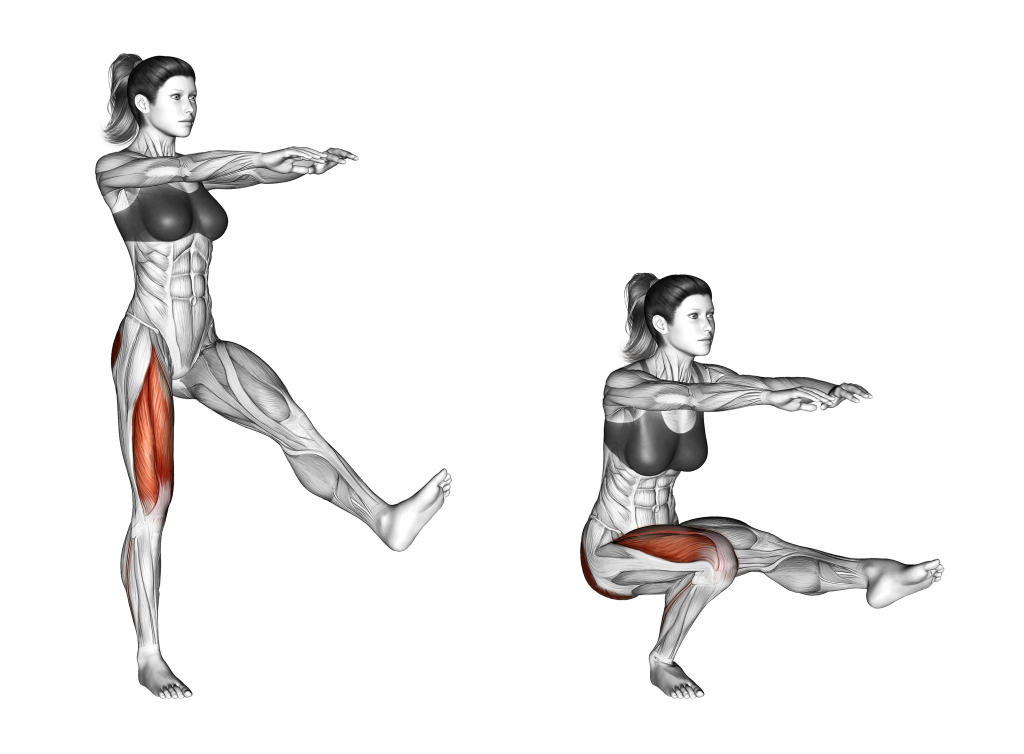
Once you’ve identified which exercise is most suitable for your abilities, it should be performed in complete sets until you can perform multiple sets in a workout without reaching the point of muscular failure.
This process will require a considerable amount of time and necessitates proper attention to your diet and recovery as well.
Once your chosen progression exercise is no longer challenging to complete, it is time to move on to the next exercise on the list (or one of similar purpose).
Repeat this process of progressive training until you have built up enough strength to do a pistol squat safely.
Pistol Squat Progression Exercises
1. Conventional Bodyweight Squats
The first step on your pistol squat journey should start at the conventional bodyweight squat - an exercise accessible to the majority of healthy individuals.
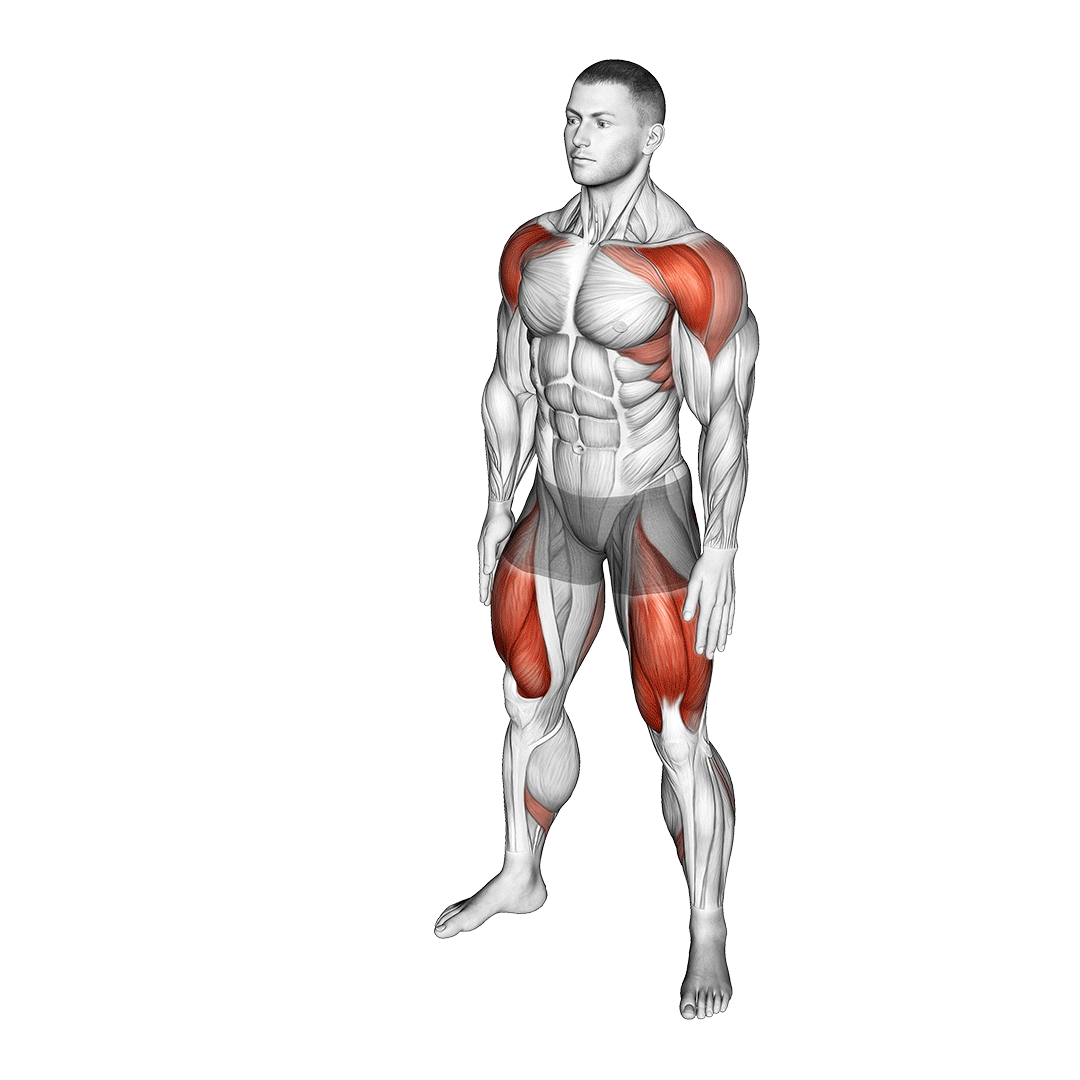
The bodyweight squat is quite literally an ordinary squatting motion, with the exerciser lowering themselves at the hips and knees as they maintain an upright torso. This classifies it as a closed chain compound exercise of entry-level skill and flexibility requirements.
The bodyweight squat primarily targets the muscles of the quadriceps, glutes and hamstrings, and requires no advanced mobility or significant physical strength to perform.
Purpose as a Pistol Squat Progression Exercise
Bodyweight squats act as an initial entry into lower body resistance training, and are meant to build sufficient bilateral coordination and strength in the quadriceps and posterior chain - thereby allowing the exerciser to perform more advanced bodyweight exercises.
Who Should Do It?
The conventional squat is accessible to practically any healthy exerciser, and is the perfect introduction for novices to calisthenics training.
However, individuals with a history of injury or poor flexibility in the hips, knees or lower back should avoid this exercise without prior approval from a physician.
How-to:
Standing with the feet shoulder-width apart and the torso upright, the exerciser will lower their body by bending at the knees and pushing the pelvis backwards. The core should remain contracted and the back straight so as to protect the spine.
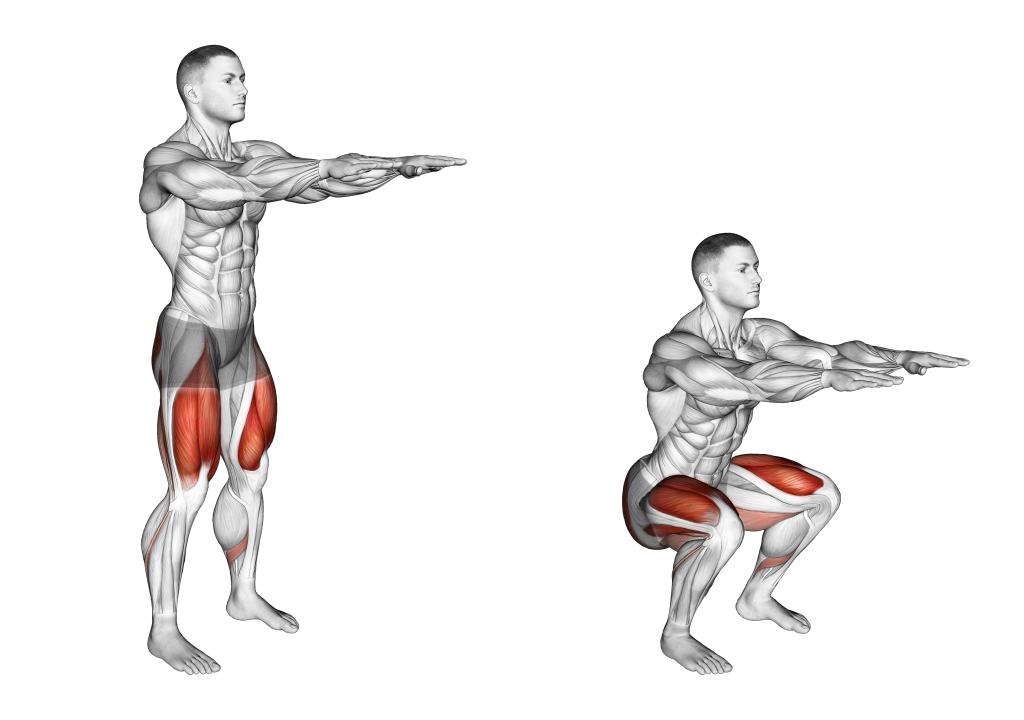
Once the body has been lowered enough for the thighs to be parallel to the ground, the exerciser will push through their heels and rise back to their original standing position - thereby completing the repetition.
2. Bodyweight Lunges
Bodyweight lunges are the next pistol squat progression exercise to try, as they feature a unilateral movement pattern and allow for greater training stimulus to be achieved without the need for more advanced exercise familiarity.

Like bodyweight squats, lunges are a closed chain multi-joint exercise performed so as to build strength in the muscles of the legs.
They primarily differ in the fact that lunges place greater resistance on one side of the body at a time - increasing the intensity of the recruitment and allowing for further progression to be achieved.
Purpose as a Pistol Squat Progression Exercise
Bodyweight lunges are a novice-level progression step to the pistol squat. They are used to help familiarize the exerciser with the unilateral movement pattern that characterizes the pistol squat, and furthermore build strength in the lower body.
Who Should Do It?
Bodyweight lunges are perfectly suitable for novice exercisers with enough strength to stabilize themselves throughout the movement pattern.
How-to:
Standing upright with the feet set hip-width apart, the exerciser will contract their core and take an exaggerated step forward - following the movement with the leg behind them so as to lower the body towards the ground.
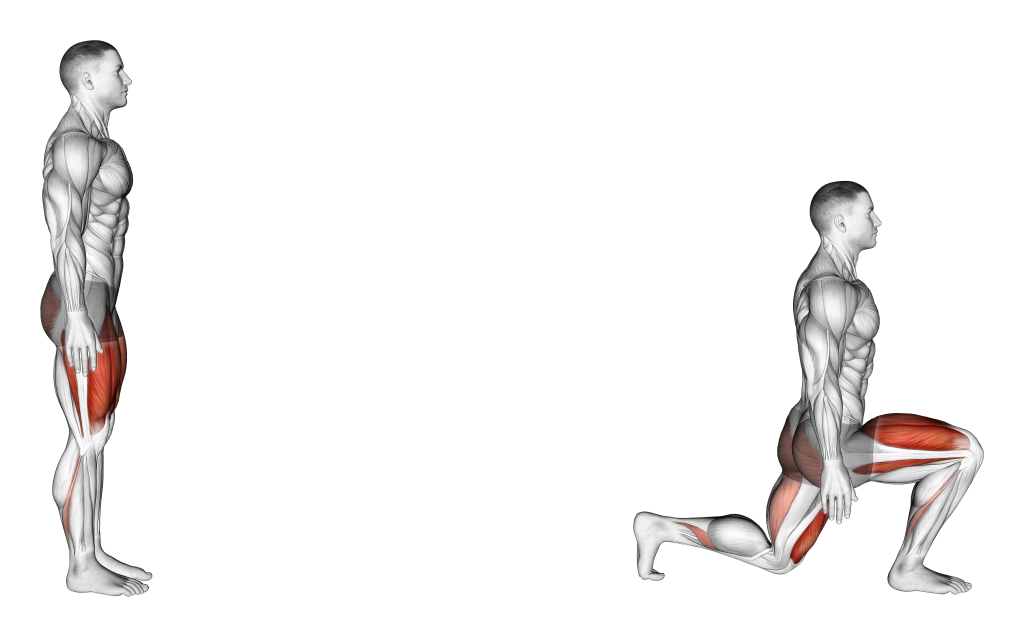
Once both knees are bent at a 90-degree angle, the exerciser will push through their front-facing foot and return to the original starting position. This completes the repetition.
Remember to perform the movement with both sides of the body in equal volume.
3. Step Ups
Step ups take the unilateral strength and movement pattern developed by lunges and further up the intensity. They will require a plyometric box, exercise bench or similarly elevated object with which to climb.
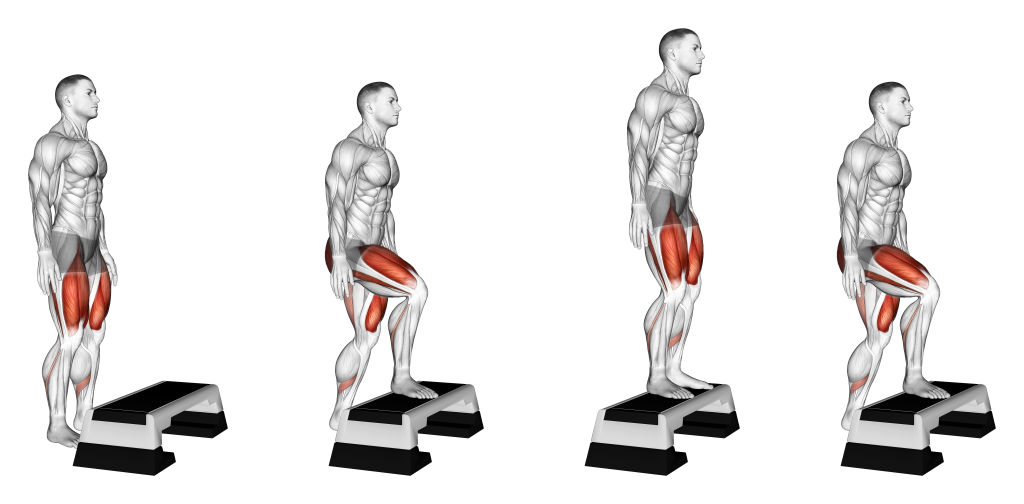
Like other pistol squat progression exercises, step ups are a compound exercise involving one-sided contraction of the lower body. They primarily target the quadriceps and glutes, but also work the hamstrings and calves in addition.
Purpose as a Pistol Squat Progression Exercise
Step ups are meant to familiarize the exerciser with balancing on one leg as they bend the knee, and will also help build the necessary muscular stability and strength to perform a pistol squat without toppling over.
Keep in mind that the step up should make use of a platform that is higher than the mid-shin, as using an object that is too low may defeat its purpose as a progression exercise.
Who Should Do It?
Although considered to also be a novice exercise, step ups should be performed once the exerciser has already mastered bodyweight squats and lunges.
This is because step ups are meant to build the necessary skills and coordination needed to do more advanced pistol squat progression exercises, rather than gross physical strength.
How-to:
Standing in front of their chosen platform, the exerciser will raise one knee and step firmly atop the platform, pushing further through the heel so as to raise the body upwards. The unmoved leg will follow suit, also landing atop the platform alongside the first leg.
From this position, the exerciser will simply reverse the motion and return to the floor so as to complete the repetition.
Remember to alternate which legs move first so as to avoid a muscular imbalance.
4. Bulgarian Split Squat
Once the exerciser has established an intermediate baseline of strength and stability, they can take things further with the use of the Bulgarian split squat.
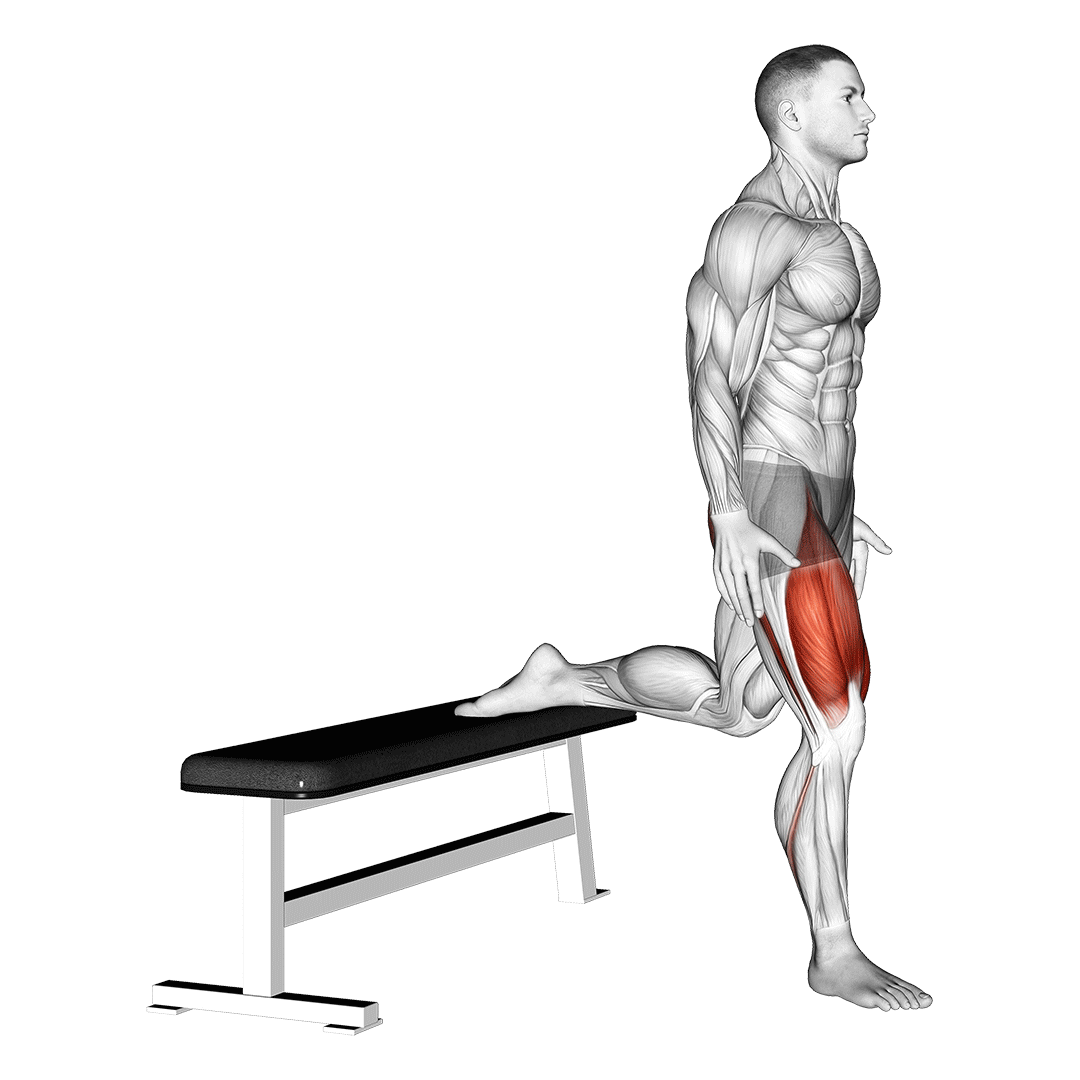
Bulgarian split squats are classified as a closed chain compound movement of considerable intensity, and primarily target the quadriceps, hamstrings and glutes.
Purpose as a Pistol Squat Progression Exercise
As a pistol squat progression, the Bulgarian split squat serves as both a method of mastering one-legged squatting mechanics, as well as a major source of muscular training stimulus for the largest muscles of the lower body.
Unlike lunges or step ups, Bulgarian split squats feature the non-working leg being nearly entirely absent in terms of force production - forcing the working leg to truly bear most of the body’s weight; This equates to a greater level of intensity and subsequently greater development as well.
Who Should Do It?
Bulgarian split squats are an intermediate level exercise, and should be perfect for individuals who already have several months of training under their belt.
In addition, Bulgarian split squats are also excellent for individuals who have the strength to perform pistol squats, but not the balance or technical familiarity.
How-to:
Standing in a split squat stance with one foot resting behind the body atop an exercise bench and the other stepped forwards, the exerciser will contract their core and ensure their upper body is upright as they bend the front-facing knee.

The knee behind the torso should bend towards the ground as they do so, lowering the body as the backwards-facing leg acts as a source of stability.
Once the front-facing thigh is parallel to the floor, the exerciser will push through their heels and rise back upwards.
Once back in a standing position, the repetition is considered to be complete.
5. Shrimp Squat
The last exercise before performing pistol squat variations; shrimp squats are mechanically similar to the regular pistol squat, but involve a shorter range of motion.
This makes them excellent as a final progression to pistol squats themselves, as the sole difference is purely based around the intensity of each repetition.
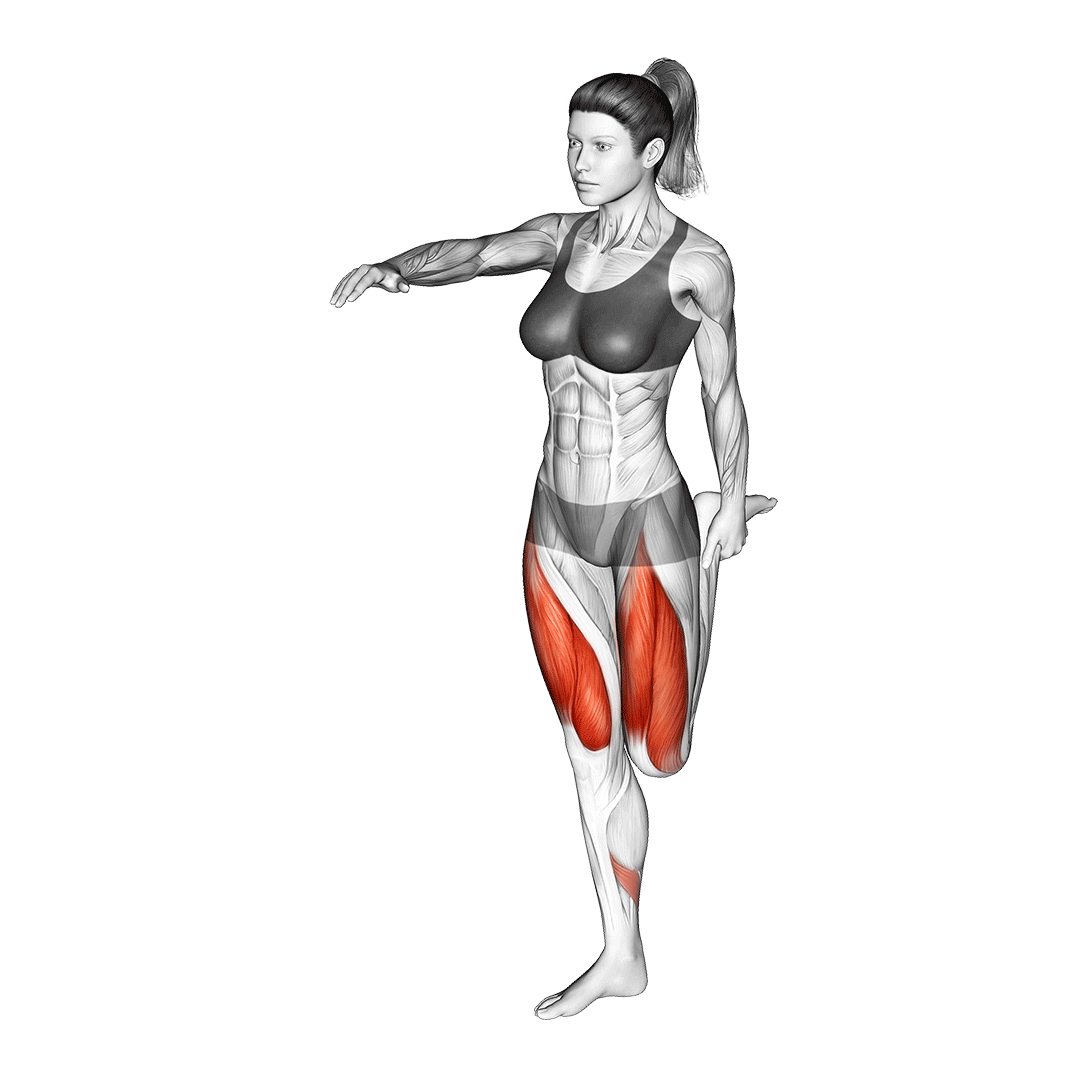
Shrimp squats are a unilateral closed chain compound movement found to be quite effective at building strength in the quadriceps, calves and glutes through high-resistance repetitions.
Purpose as a Pistol Squat Progression Exercise
Shrimp squats replicate the movement pattern, mechanics and muscular recruitment of the pistol squat in as close a manner as possible.
This makes them excellent for individuals who are almost able to perform a full pistol squat, but find exercises like the Bulgarian split squat or lunges to be insufficient.
Who Should Do It?
Because of the intensity and complexity of the shrimp squat, it is best for exercisers of at least an intermediate level to perform them.
With a focus on time under tension, they can be an excellent tool for developing strength and balance for pistol squats.
How-to:
Standing with their feet set hip-width apart, the exerciser will lift one foot behind them and grasp it with the hand of the same side. The core must remain contracted and the chest upright so as to help maintain proper balance.
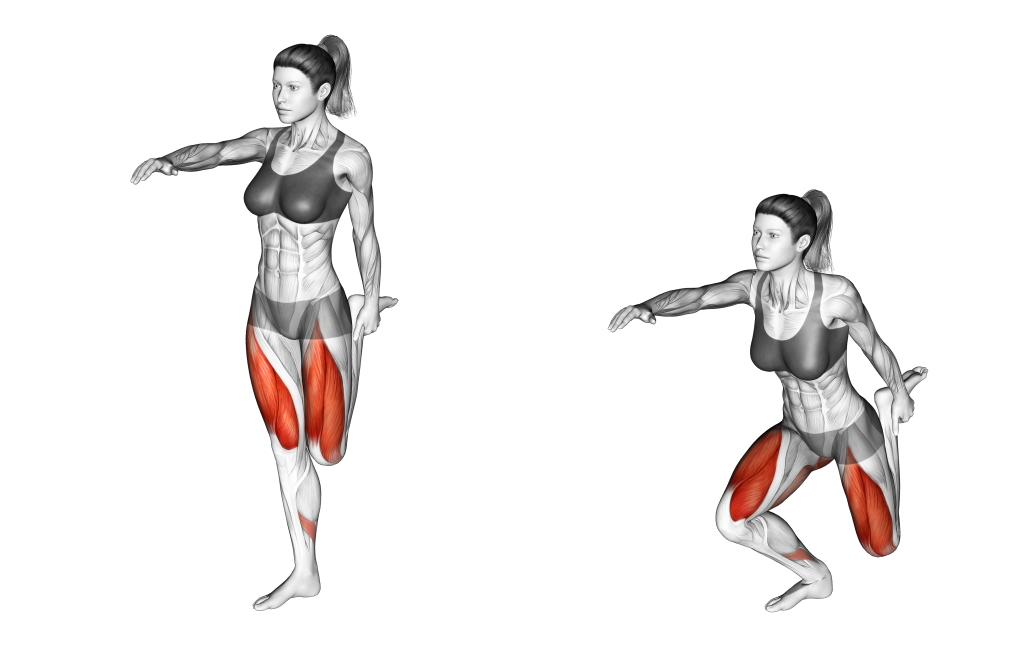
Once balanced on one leg, the exerciser will bend their knee as the leg behind them extends backwards, lowering themselves until their thigh is parallel to the ground.
From this position, the exerciser will push through their heel and rise back to their original standing position - thereby completing the repetition.
6. Box Pistol Squat
The first pistol squat variation to try when progressing to a full pistol squat, as it replicates the same mechanics as the conventional variation without requiring a wide range of motion or constant time under tension.
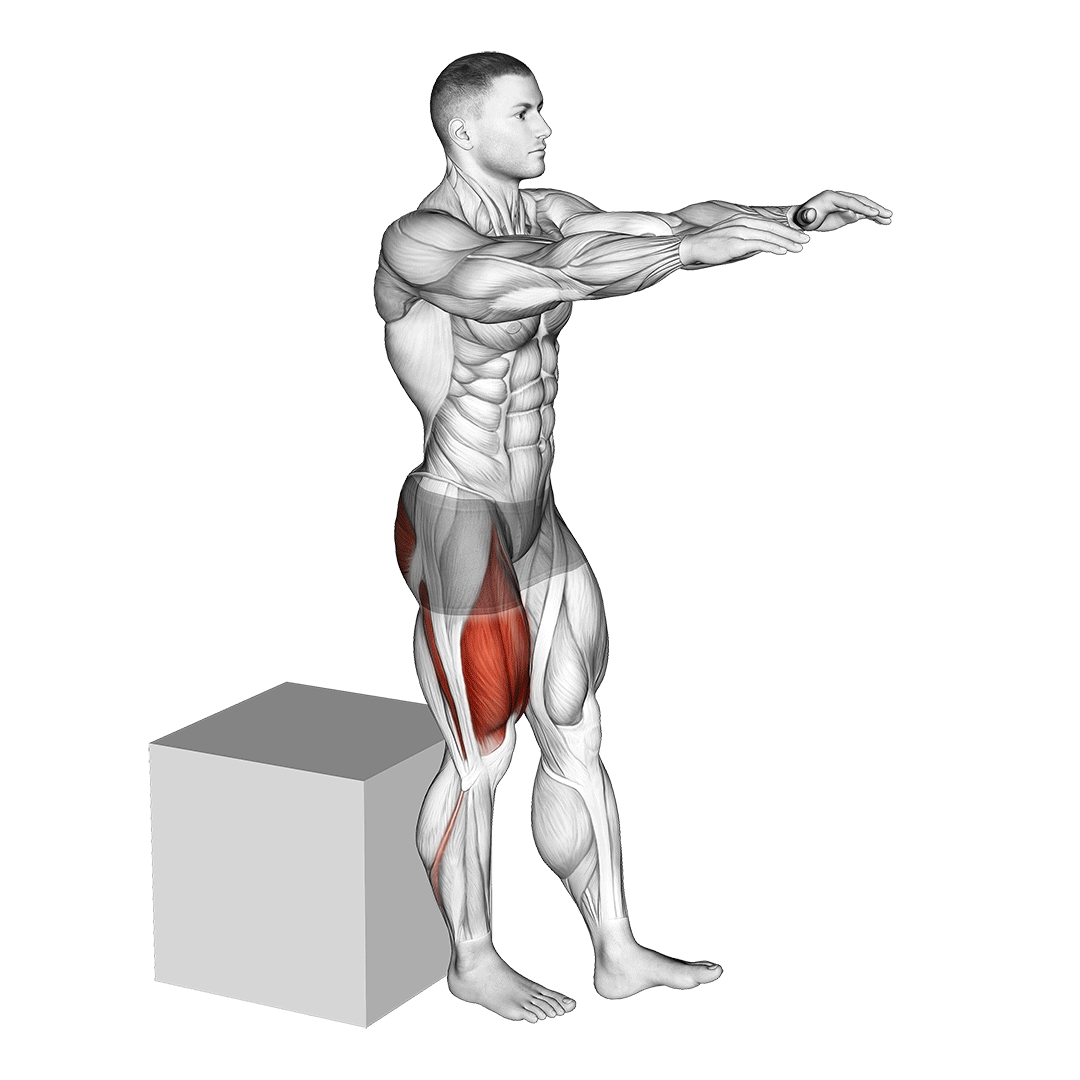
As the name implies, the box pistol squat is simply a pistol squat performed with the exerciser lowering themselves atop a box.
Not only does this shorten the range of motion and help protect the exerciser, but it also incorporates a more explosive lift-off so as to help build posterior chain power - as is needed in the conventional pistol squat.
Purpose as a Pistol Squat Progression Exercise
The box pistol squat helps the exerciser practice pistol squat mechanics and rising out of “the hole” at the bottom of a regular pistol squat repetition.
In addition, it is excellent as an advanced calisthenics posterior chain exercise.
Who Should Do It?
The box pistol squat is considered to be quite intense, and only exercisers that can safely do a full shrimp squat should attempt it.
How-to:
Standing facing away from the box, the exerciser will raise one leg in front of themselves, ensuring that the knee is straight and the body is perfectly balanced on the opposite leg.
Bending their knee, the exerciser will lower their body until they are sitting back on the box, opposite leg still extended before them.
To complete the repetition, the exerciser will drive through their one heel and squeeze their glutes, raising themselves back into a standing position and thereby completing the repetition.
The height of the box should be steadily lowered until the exerciser is confident that they can perform a pistol squat without it.
7. Hand-Assisted Pistol Squat
The final progression to performing a full pistol squat is to perform one with the hand gripping an object for stability.
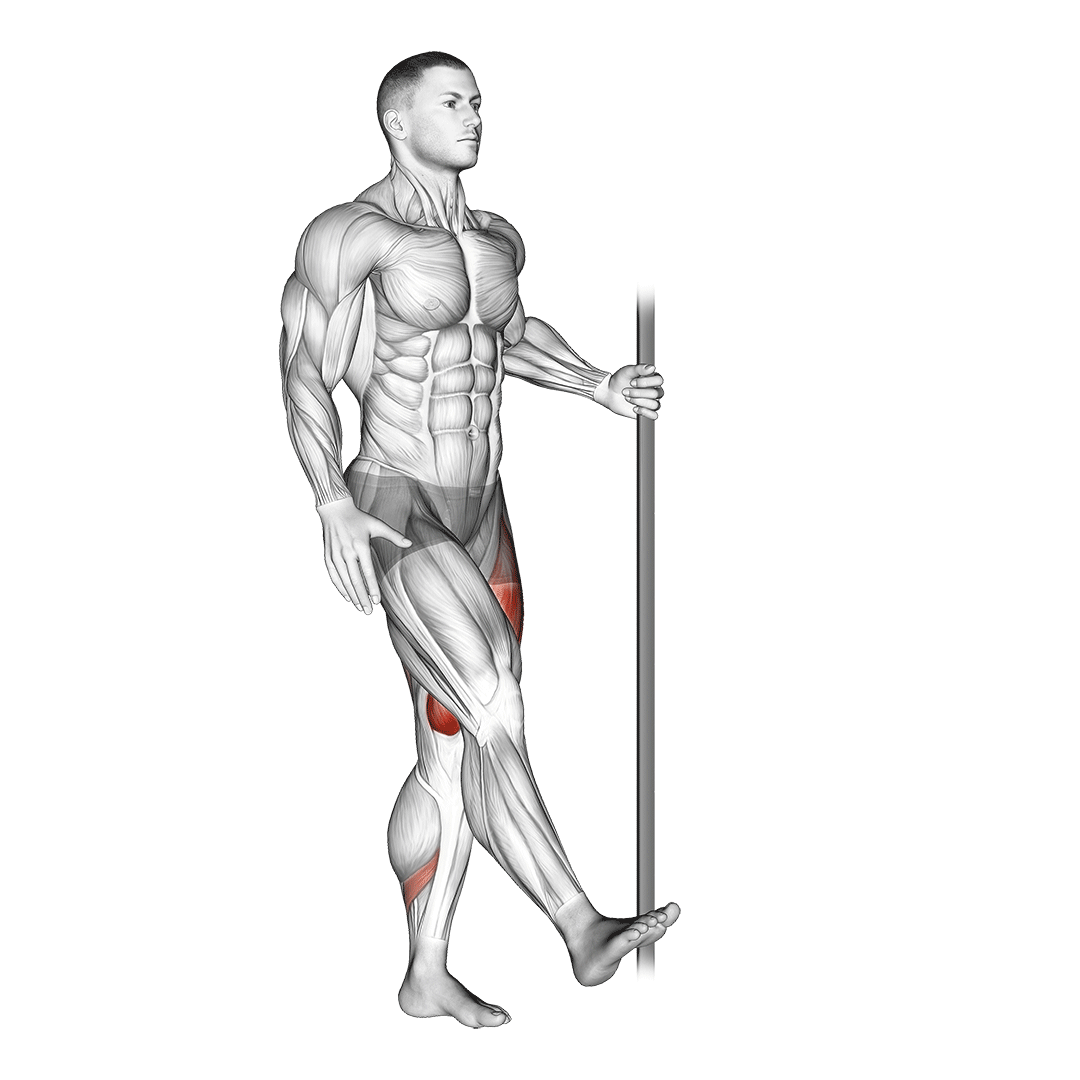
While this is not necessarily required and it is entirely possible to go from box pistol squats to full pistol squats, the hand-assisted pistol squat allows exercisers to perform the latter exercise without fear of losing their balance.
In all other aspects, the hand-assisted pistol squat is identical to its conventional counterpart, and the sole difference is the stability support of the hand.
Purpose as a Pistol Squat Progression Exercise
The hand-assisted pistol squat is used as a safe method of practicing the full pistol squat in all its aspects - only with a lesser degree of stability needed.
Who Should Do It?
Hand-assisted pistol squats should be done by individuals who already possess the strength and skill needed to perform a conventional pistol squat - but wish to practice in a safer manner first.
How-to:
Standing with their feet shoulder-width apart and with one arm extended out to the front, the exerciser will place the opposite hand on a nearby object for stability as they extend one leg off the ground in a straight line.
From this stance, the exerciser will then bend their remaining leg at the knee and slowly lower their body towards the ground, keeping their back straight and their chest upright.
Once the thigh is parallel to the ground, the exerciser will push through their heel and rise back to the original standing position - using their hand for support if needed.
Now back in a standing position, the repetition is considered to be complete.
You Can Now do Pistol Squats
If you’ve managed to do a hand-assisted pistol squat without falling over, then you’re likely already able to do a full pistol squat.
Try it out - but remember to take proper precaution against injury.
And remember - the pistol squat is an invaluable tool for building strength and mass in the lower body, but it isn’t the only lower body calisthenics exercise. If it’s just too difficult or time-consuming, other exercises like the squat jump or the sissy squat may be more useful.
References
1. Richards J, Thewlis D, Selfe J, Cunningham A, Hayes C. A biomechanical investigation of a single-limb squat: implications for lower extremity rehabilitation exercise. J Athl Train. 2008 Sep-Oct;43(5):477-82. doi: 10.4085/1062-6050-43.5.477. PMID: 18833310; PMCID: PMC2547867.
2. Dawson SJ, Herrington L. Improving Single-Legged-Squat Performance: Comparing 2 Training Methods With Potential Implications for Injury Prevention. J Athl Train. 2015 Sep;50(9):921-9. doi: 10.4085/1062-6050-50.9.03. Epub 2015 Aug 26. PMID: 26308498; PMCID: PMC4639882.
